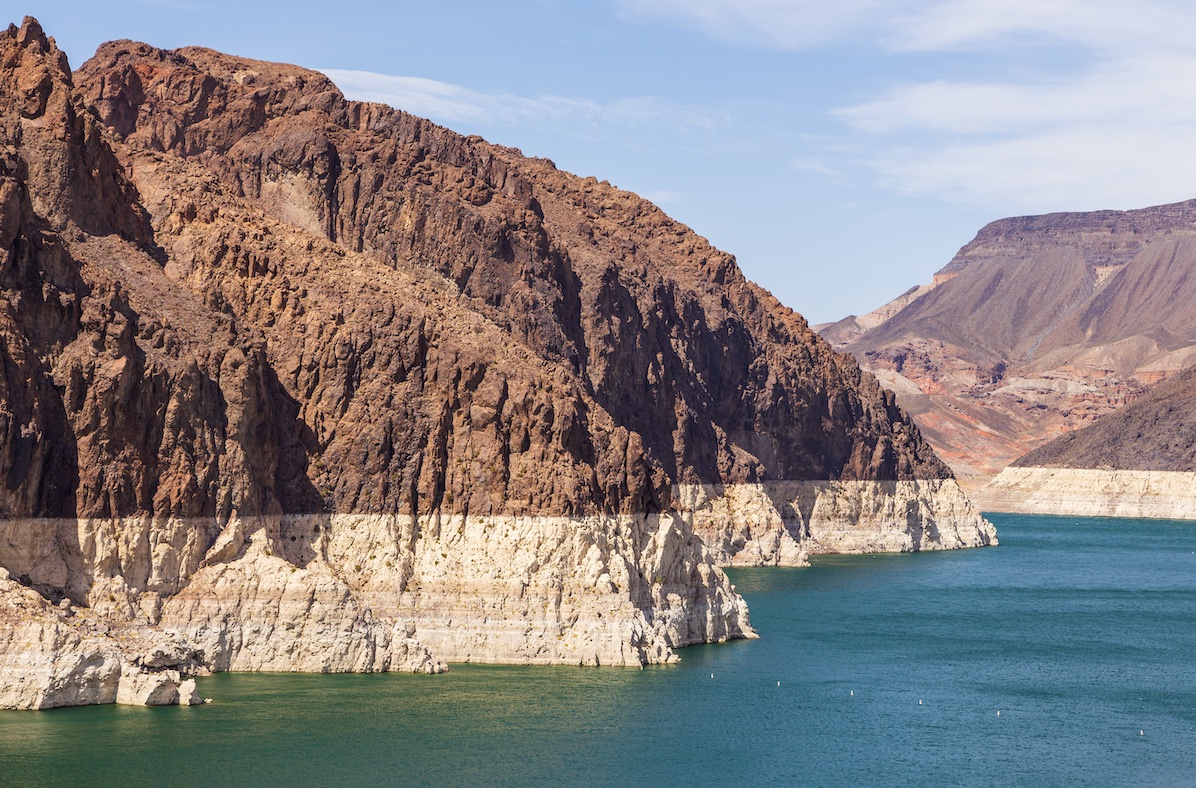|
Drought Triggers Water Usage Cutbacks
Drought in the US West, a trend that MRP has continually highlighted due to its effects on our LONG Agricultural Commodities theme, has triggered a slew of water supply shortages across the region.
The federal government recently declared the first ever water shortage along the Colorado River, which supplies drinking water for over 40 million people. The water cuts were triggered as basins along the river fell to record low levels. Two of the major reservoirs, Lake Mead and Lake Powell, are currently sitting at 35% and 37% capacity, respectively.
Years of continual drought have caused snow runoff from the Rocky Mountains to be absorbed before it can reach the Colorado River. The Wall Street Journal noted that this effect, partly due to climate change, caused the Colorado River to fall 2.5 million acre-feet below the Bureau of Reclamation’s forecast for the first half of the year, nearly equivalent to Arizona’s entire water allocation in a year.
Mandatory water cuts could eventually become a new normal for the Southwest, as the drought proves to be incredibly persistent. At least 95% of the US West is under some form of drought, with at least half of the region considered to be facing extreme conditions. High Country News reports that this fall fire season is expected to be longer and more severe due to these conditions, tightening water supply further at a time when demand is surging.
PBS News writes that water demand will have to be consistently curtailed until it matches supply, noting that demand has significantly risen over the last few decades for the fast depleting resource. California has asked its residents to cut back their water usage by 15%, while Arizona will see 18% reduction in its total supply from the Colorado River.
It should be noted that water scarcity is not a new trend. As the BBC writes, 40% of the global population is affected by water scarcity, while nearly a quarter of the world faces severe water scarcity at least one month out of the year.
Further, BBC highlighted a report from the United Nations and the World Bank which predicts that drought could put up to 700 million people at risk of displacement by 2030. It’s likely that demand for clean water rises as climate change accelerates, populations rise and economies grow, potentially setting the stage for ‘water wars’ over the next few decades.
Water Scarcity Boosts Commodity, Investment Must Rise Further
As water grows increasingly scarce, the price of the commodity has skyrocketed. In April, MRP noted the Nasdaq Veles California Water Index (NQH20), the futures contract which provides exposure to California water scarcity, had risen to $831.97, a 66% increase year to date. Now, that index has surged as high as $936.22 at the end of August, nearly doubling its valuation since the beginning of the year.
It’s likely that price will continue to climb, as California’s water reservoirs stood at just 53% of their historical average at the end of the July, keeping supply low while wildfire season accelerates, per MarketWatch.
It is important to note that water futures remain in their infancy stage as the Nasdaq Veles California Water Index was the first futures contract tied to the price of water, launching last December.
With that said, it is clear that investment into water conservation, treatment, and distribution must rise in coming years to combat higher prices, as well as to avoid accompanying water usage cuts from the federal government. Currently, the United Nations predicts half the global population could lack clean drinking water by 2025.
Blue & Green Tomorrow has reported how imperative funding for water infrastructure is in order to avoid worsening an already dire situation. The report found that 15% of water in the US is lost to leaks, and that figure can climb as high as 50% seen in India. Similarly, per capita water supply around the globe has been steadily decreasing since the 1950’s, as the finite supply dwindles and populations increase.
MarketWatch recently highlighted a Morningstar report that showed water funds have accumulated more than $35 billion of assets under management to date. While those funds do not directly track the price of water, they are comprised of water utility companies focused on infrastructure and developing water efficient technology.
The report also noted that while water funds have largely been considered a niche category, they continue to garner investor attention as concerns about climate-change induced water shortages increase and interest in ways to avert them grow.
Nearly half of the companies on America’s four major stock indexes are in industries with medium to high water risk, which means water conservation will have to quickly become a corporate priority. Nasdaq noted that Pepsi, as an example, plans to replenish 100% of the water it uses in manufacturing in high-risk areas by 2025, but other corporations will have to announce similar steps to make significant progress.
Similarly, the Biden administration’s highly touted infrastructure bill will set aside $55 billion for clean drinking water and wastewater infrastructure, per Water & Wastes Digest.
As droughts spread, clean water will become increasingly scarce and likely drive the NQH20 index higher. Investment into water treatment and infrastructure companies have been rising as well, but funding must ascend further in the coming years as drought is forecast to cause additional water shortages through the next decade.
The Invesco Water Resources ETF (PHO) and First Trust Water ETF (FIW) both track water infrastructure and utility companies, while the Invesco Global Water ETF (PIO) focuses on firms producing water purification and conservation products.
As of September 8, 2021 those ETFs have returned 29%, 27%, and 24% year to date, respectively. |


Leave a Reply